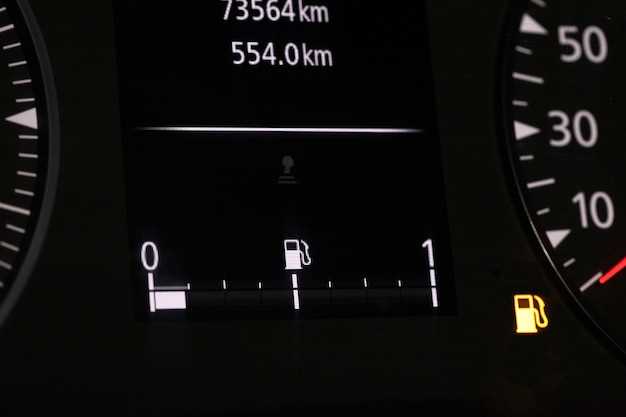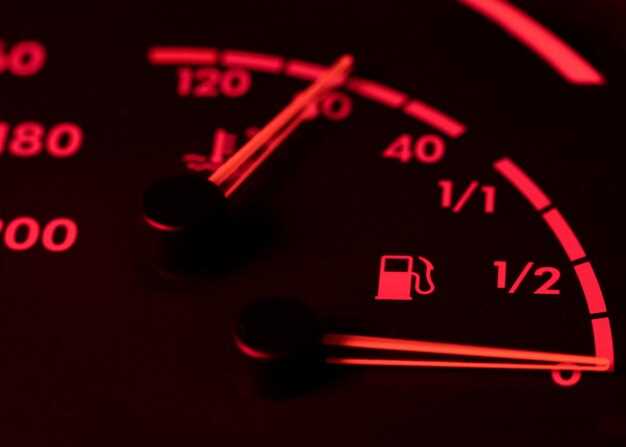
The Check Engine Light (CEL) is an essential indicator in modern vehicles, warning drivers of potential issues within the engine or emission control systems. Understanding how to accurately read OBD (On-Board Diagnostics) codes is crucial for diagnosing these problems effectively. With the prevalence of advanced technology in today’s cars, interpreting these codes can save both time and money by facilitating timely repairs.
Many vehicle owners may experience anxiety when the Check Engine Light illuminates, fearing significant problems. However, armed with the correct knowledge and tools, you can assess these codes accurately. This familiarity not only demystifies the diagnostic process but also empowers you to communicate more effectively with mechanics, ensuring that necessary repairs are conducted efficiently.
To interpret OBD codes appropriately, one must utilize an OBD-II scanner, which interfaces with the vehicle’s onboardcomputer. Once connected, the scanner retrieves the specific diagnostic trouble codes (DTCs) stored in the system, providing insight into what triggered the light. Knowing how to analyze these codes is vital for both amateur and professional mechanics, as it forms the basis for effective troubleshooting and repair.
Understanding OBD-II: Basics and Functionality
On-Board Diagnostics II (OBD-II) is an essential system found in modern vehicles that monitors the engine and various components for performance and emissions compliance. Introduced in the mid-1990s, OBD-II systems provide standardized diagnostic trouble codes (DTCs) that help identify issues affecting engine operation.
The primary function of OBD-II is to ensure that the engine runs efficiently while minimizing harmful emissions. It accomplishes this by continuously monitoring parameters such as engine temperature, air-fuel mixture, and exhaust output. If any parameter falls outside predetermined ranges, the system generates a trouble code and illuminates the check engine light on the dashboard.
OBD-II utilizes a 16-pin connector located under the dashboard, allowing mechanics and vehicle owners to access diagnostic information using a code reader or scan tool. This accessibility facilitates quicker diagnoses and repairs, as technicians can retrieve specific codes that correspond to particular issues within the engine or related systems.
The OBD-II system is divided into several categories of trouble codes: generic codes (P0xxx), manufacturer-specific codes (P1xxx), and enhanced codes for transmissions and other systems. Each code provides insight into where the malfunction may be occurring, allowing for targeted troubleshooting and repair.
In summary, understanding OBD-II is crucial for effectively diagnosing engine problems and maintaining vehicle performance. By leveraging its functionality, users can address issues promptly, ensuring the engine operates smoothly and efficiently while meeting regulatory standards.
How to Use an OBD-II Scanner for Code Retrieval

Using an OBD-II scanner is essential for accurately retrieving engine codes and diagnosing issues in modern vehicles. First, locate the OBD-II port, typically found under the dashboard, near the driver’s seat. Ensure the vehicle is turned off before connecting the scanner to prevent any electrical interference.
Once the scanner is attached to the OBD-II port, turn the vehicle’s ignition to the “On” position without starting the engine. This allows the scanner to establish a connection with the vehicle’s onboard computer system. Most OBD-II scanners will power on automatically upon connection.
Follow the instructions provided with your specific OBD-II scanner. Navigate through the menu and select the option for “Read Codes” or a similar term. The scanner will then communicate with the engine control unit (ECU) and retrieve any stored diagnostic trouble codes (DTCs) related to the engine.
After displaying the codes, the scanner may also provide a brief description for each code, helping you understand the nature of the issue. Write down the codes for further analysis. If your scanner supports it, you can also clear the codes after repairs, allowing you to reset the check engine light.
After completing the retrieval process, disconnect the scanner and turn off the ignition. It’s advisable to keep a record of the codes, as well as any live data or freeze frame data that the scanner might provide, to assist in resolving ongoing or future engine problems effectively.
Interpreting Check Engine Codes: What They Mean
When the check engine light activates on your dashboard, it signals that your vehicle’s monitoring system has detected an issue. Understanding these codes is crucial for effective diagnostics and repairs.
Check engine codes can be retrieved using an On-Board Diagnostics II (OBD-II) scanner, which will display a series of alphanumeric codes. These codes are standardized, meaning they are consistent across most vehicle makes and models. Here’s how to interpret them:
- Code Structure: Check engine codes typically follow a format of a letter followed by four digits (e.g., P0420). The letter indicates the category of the issue.
- Letter Categories:
- P: Powertrain (engine and transmission)
- B: Body
- C: Chassis
- T: Network and vehicle integration
- Diagnostic Categories: The following digits provide specific information about the issue:
- The first digit indicates whether the malfunction is generic (0) or manufacturer-specific (1).
- The second digit identifies the subsystem involved, such as fuel and air metering or ignition system.
- The third digit often relates to the specific fault within the subsystem.
Common check engine codes and their meanings include:
- P0300: Random/multiple cylinder misfire detected
- P0420: Catalyst system efficiency below threshold (Bank 1)
- P0171: System too lean (Bank 1)
It’s important to note that while these codes provide a helpful starting point, they do not tell the entire story. Factors such as environmental conditions, wear and tear, or even software glitches can influence why the check engine light comes on.
Before proceeding with repairs, it’s advisable to consult a professional mechanic or use reliable service manuals to ensure accurate diagnostics. Regular maintenance can help prevent check engine issues from arising in the first place.
Troubleshooting Common Problems Indicated by Check Engine Light

The Check Engine Light (CEL) is an essential feature in modern vehicles, designed to alert drivers to potential issues within the engine or related systems. Using an OBD (On-Board Diagnostics) scanner, you can read the codes generated by the vehicle’s computer to pinpoint the problem. Below are some common issues indicated by the Check Engine Light and basic troubleshooting steps.
| Problem Code | Possible Issue | Troubleshooting Steps |
|---|---|---|
| P0131 | Oxygen Sensor Circuit Low Voltage |
|
| P0420 | Catalytic Converter Efficiency Below Threshold |
|
| P0300 | Random/Multiple Cylinder Misfire Detected |
|
| P0455 | Evaporative Emission Control System Leak Detected (Gross Leak) |
|
Addressing the issues indicated by the Check Engine Light promptly can prevent further damage and costly repairs. Regular maintenance and timely diagnostics using an OBD scanner enhance vehicle reliability and performance.
Resetting the Check Engine Light: When and How
Resetting the check engine light is often necessary after addressing the underlying issue that triggered it. It’s essential to determine whether the problem has been properly diagnosed and repaired before performing a reset, as simply clearing the light without fixing the issue can lead to more significant damage or performance problems.
The check engine light is part of the vehicle’s onboard diagnostics (OBD) system, which monitors key engine components. When a fault is detected, a trouble code is stored, and the check engine light activates. Before resetting, reviewing the trouble codes with an OBD-II scanner can provide insight into the specific issue, enabling informed decisions regarding repairs.
Once the necessary repairs have been made, resetting the check engine light can be accomplished through several methods. The most common method involves using an OBD-II scanner. Connect the scanner to the vehicle’s OBD-II port, typically located under the dashboard near the steering wheel. Follow the scanner’s prompts to access the trouble codes and select the option to clear or erase them. This action will turn off the check engine light.
Alternatively, the check engine light can be reset by disconnecting the vehicle’s battery. This method involves removing the negative terminal for a few minutes to clear the computer’s memory. However, this can also reset other electronic settings in the vehicle, such as radio presets and clock settings, which may not be ideal.
It is crucial to remember that if the check engine light reactivates after a reset, it indicates that the issue has not been fully resolved. In such cases, further diagnostic work is needed to ensure the vehicle remains in optimal condition.
Preventative Measures to Avoid Frequent Check Engine Alerts
To minimize the occurrence of check engine alerts, it is essential to adopt proactive maintenance strategies for your vehicle. Regular maintenance not only helps in identifying potential issues early but also enhances the overall performance of your automobile.
1. Regular OBD Scanning: Utilize an On-Board Diagnostics (OBD) scanner periodically to check for any trouble codes before they escalate into significant problems. Regular scans can help in identifying hidden issues that may trigger check engine lights.
2. Maintain Fluid Levels: Ensure that engine oil, coolant, and other essential fluids are at proper levels. Low fluid levels can lead to overheating and cause various engine components to malfunction, resulting in alerts.
3. Replace Filters Regularly: Air and fuel filters play a critical role in engine efficiency. Clogged filters can cause poor combustion, leading to increased emissions and unexpected check engine warnings. Regular replacement is crucial for optimal performance.
4. Monitor Engine Performance: Pay attention to your vehicle’s performance, such as unusual noises, decreased fuel efficiency, or changes in acceleration. Early detection of these symptoms can prevent triggering check engine lights.
5. Keep the Gas Cap Tight: A loose or damaged gas cap can lead to fuel evaporation and trigger the check engine light. Always ensure the cap is securely fastened and check for damages when refueling.
6. Use Quality Fuel: Utilize high-quality fuel that matches your vehicle’s specifications. Substandard fuel can lead to engine knocking and increased emissions, which may activate the check engine light.
7. Schedule Regular Inspections: Make it a habit to schedule comprehensive inspections with a qualified mechanic. They can identify potential issues that may not generate immediate alerts but could lead to check engine lights in the future.
By following these preventative measures, you can significantly reduce the frequency of check engine alerts and maintain your vehicle’s reliability and longevity.
